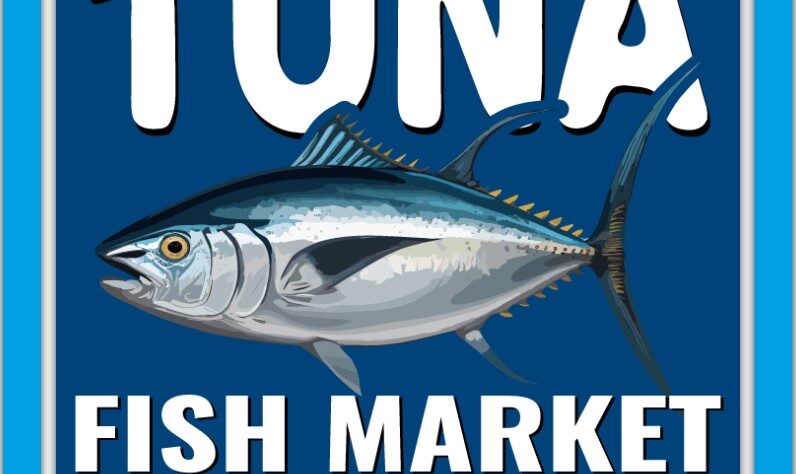The global tuna fish market size was valued at USD 41.94 billion in 2023. The market is projected to grow from USD 42.96 billion in 2024 to USD 54.45 billion by 2032, recording a CAGR of 3.01% during the forecast period of 2024-2032.
Since tuna is one of the most valuable fish for commerce and plays a significant role in the marine ecology, the worldwide market share of tuna fish is expected to grow at a significant rate. The commercial tuna fishing, of which seven varieties—including Skipjack, Yellowfin, Bigeye, Pacific, Atlantic, and Southern Bluefin—is a significant part of the blue economy. In recent years, the fish business has noticed changes in the dietary habits of its clientele. The global search for quick and healthful food has led to a notable increase in the demand for foods high in protein.
Information Source: https://www.fortunebusinessinsights.com/industry-reports/tuna-fish-market-100744
COVID-19 Impact:
COVID-19-related Supply Chain Disruptions to Negatively Influence Market Growth
The global market suffered as a result of the COVID-19 pandemic. Governments everywhere enforced a plethora of safety protocols and limitations, which profoundly impacted the landing of commercial fish. This was attributed to factors such as closed restaurants, restricted labor movement, and social distancing regulations. The Food and Agriculture Organization (FAO) reports that the pandemic significantly reduced restaurant sales, which in turn caused a fall in demand for tuna in cans of about 80–90%.
Segments:
Skipjack Tuna to Gain Traction among Consumers due to its Rich Nutritional Value and Easy Availability
In terms of species, the market is divided into Skipjack, Albacore, Yellowfin, Bigeye, Bluefin, and others.
Skipjack segment is expected to capture the largest market share as it is easily available in the market and has a strong nutritional profile. Skipjack is commercially important as it is one of the most popular fish used in canned tuna products. As per the Asia Pacific – Fish Watch, over 70% of total tuna catches in the Western and Central Pacific and almost half in the Indian Ocean are skipjack tuna. This type has a moderate cholesterol level and is an excellent source of low-fat protein as well as sodium, further aiding the growth of the segment.
Canned Segment Sales to Grow with Rise in Convenience Food Consumption
Based on type, the market is differentiated into fresh, canned, and frozen. Canned segment is expected to emerge as the leading segment and is anticipated to retain its dominant position during the forecast period. This is due to the rising awareness of its health benefits among consumers and convenience of use.
The presence of omega-3 fatty acids in canned tuna can lower a person’s blood pressure and cholesterol. It can also reduce the risk of dementia and inflammatory disorders. The wide availability of different types of canned tuna in the market, from plain and unseasoned products to prepared, grilled, and marinated ones, is also boosting the segment’s growth.
Report Coverage:
Both quantitative and qualitative market insights are provided by the research report. In addition, it provides a thorough examination of the types, uses, market size, and growth rate of each product category within the industry.
Additionally, the research provides a thorough analysis of market dynamics and the competitive environment. An overview of connected markets, research methodology, recent industry activities, including mergers and acquisitions, the regulatory landscape in major countries, and important industry trends are just a few of the many important insights included in the report.
Drivers and Restraints:
Canned Tuna to be Widely Consumed Due to its Affordability and Longer Shelf-life
The pace at which canned tuna is consumed worldwide has increased significantly in recent years. It is easy to preserve and a well-liked source of reasonably priced protein. It is a product that is simple to send and doesn’t need to be refrigerated. The demand for processed, ready-to-cook, and ready-to-eat foods has improved due to a noticeable increase in the proportion of the working population. Because of our busy lives, there is less time spent cooking at home, which increases the market for convenience foods like tuna in a can.
The most popular regions in the world for canned tuna purchases are Europe and Asia Pacific, and their appeal has recently extended to a number of Middle Eastern and South American nations. As more people turn to healthier seafood, particularly processed fish, sales of canned tuna, which is high in protein, are expected to rise annually.
Due to factors including dairy allergies and environmental concerns, a growing number of people are becoming vegetarians, which is negatively affecting the sales of meat and seafood in many areas. A growing number of companies, including Beyond Meat and MorningStar Farms, are increasing their investments in plant-based substitutes for traditional meat products and increasing their expenditures towards creating a diverse range of vegan meat products. In the upcoming years, these factors may impede the expansion of the tuna fish market.
Regional Insights:
In 2022, Europe commanded a commanding market share, valued at USD 14.95 billion. Due to the high per capita intake of fish and seafood as well as the existence of a well-functioning seafood industry, there is an increasing demand for these goods. Consumers in the area are choosing functional and healthful foods because they provide numerous health advantages for people leading busy and active lifestyles. Additionally, businesses are attempting to meet the growing demand from customers for goods that have practical advantages. For instance, the Thai Union Group brand John West debuted a line of nutrient-dense canned tuna in UK supermarket stores in September 2021.The product line’s three functional flavors, Immunity, Heart, and Energy, are aimed towards young consumers looking for palatable and useful dietary options.
Competitive Landscape:
New Product Launches by Reputed Companies to Accelerate Market Development
Major participants in the industry are responding to consumers’ increasing demands for seafood by launching an array of creative and unique seafood varieties. Additionally, in an effort to draw in more business, these producers are producing goods with practical advantages. For instance, the Thai Union Group company John West announced in September 2021 the introduction of a line of nutrient-rich canned tuna in UK supermarket stores. The product line’s three functional flavors, Immunity, Heart, and Energy, are aimed at young consumers searching for palatable and useful dietary options.
Key Industry Development:
January 2023 – Tuna fish farming startup, Next Tuna announced its partnership with Skretting, a manufacturer of feeds for farmed fish, to create dry feeds for Atlantic Bluefin tuna fish.
LIST OF LEADING ORGANIZATIONS PROFILED IN THE REPORT
- Bolton Group (Italy)
- Century Pacific Foods Inc. (Philippines)
- The Jealsa Rianxeira S.AU. Group (Spain)
- Grupo Albacore S.A. (Spain)
- ITOCHU Corporation (Japan)
- Thai Union Group Inc. (Thailand)
- Dongwon Enterprises Co. Ltd. (South Korea)
- IBL Ltd. (Mauritius)
- FCF Co. Ltd. (Taiwan)
- Sea Delight (U.S.)
Blog Related Insights:

